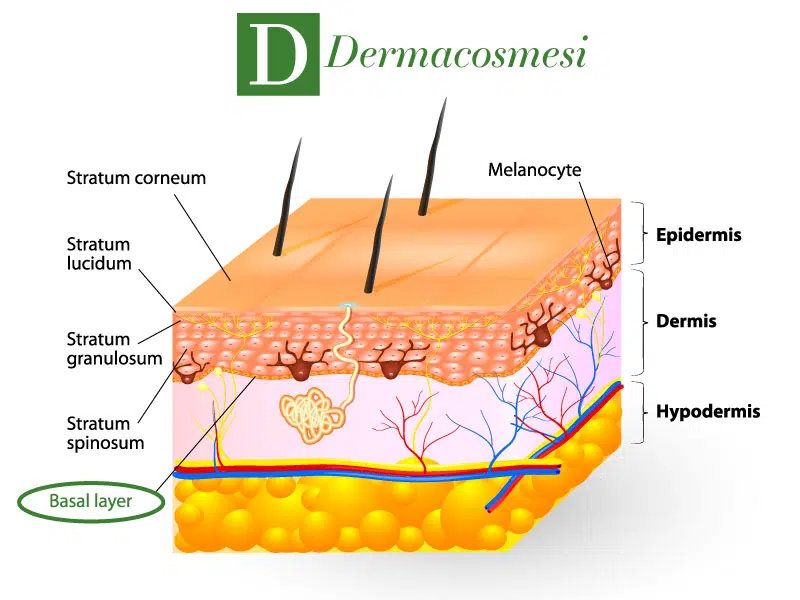In the heart of the dermis we find the stratum basale, in anatomical terms better known as the germinative layer, which forms the base of the epidermis (skin).
It is one of the 5 layers and is located at the deepest part, below the stratum spinosum.
A membrane called the basal marks the boundary line with the rest of the dermis itself.
Contents
What the germinative layer is composed of, its structure and cells
The germinative or stratum basale, consists of a single layer of cylindrical and cubic cells arranged in a palisade pattern, which are anchored to the basement membrane by junctions called hemidesmosomes.
These are cells with an oval nucleus and basophilic cytoplasm; they are true stem cells with intense fungal activity.
Being undifferentiated, they have a great reproductive capacity, are able to divide by mitosis, multiply and replace desquamated therefore “dead” cells.
Also found in the germinative layer are Merkel cells, melanocytes and keratinocytes.
The fundamental function of the germinative layer: the production of keratinocytes
The germinative or basal layer, is the main site of production of keratinocytes that are gradually carried towards the surface of the epidermis.
The cells present being stem cells, “mother cells,” reproduce giving rise to the cells of subsequent layers.
From a single cell, in fact, two originate: one stem cell and one destined to differentiate giving rise to the keratinocyte.
The new cells to progressively differentiate and migrate into the next layers until they reach the superficial layer, the stratum corneum, takes about 14 to 30 days. All of this is accomplished by the push of newly hatched cells produced in the basal or germinative layer.
During migration to the surface, the cells become increasingly flattened, the cytoplasm from basophilic gradually becoming acidophilic.
The germinative layer is also important because of the presence of melanocytes: cells containing melanin, a brown pigment responsible for skin color.
